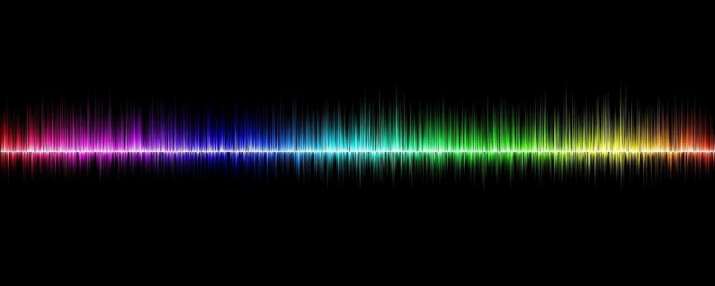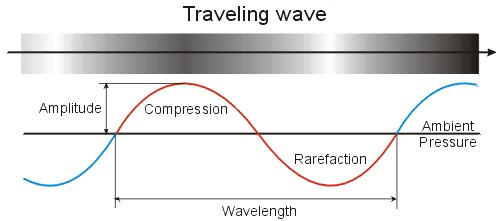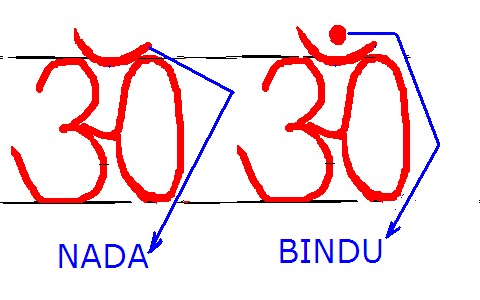FEATURES|COLUMNS|Mindful Technology
Frequencies, the Brain, and Wisdom Traditions

Most of us can easily experience—more or less consciously—some benefits from exposure to frequencies, such as sounds and colors. A common example can be found in music: it is known that listening to different kinds of music can influence our mental state.
Music can impact moods and behavior—from making people more mellow and relaxed, or increase our drive toward physical activity—that is why many gyms play fast, loud rhythms and retailers are known to stimulate the disposition for shopping using certain melodies. Humanity’s affinity for sound and music is ancestral and is even said to have impacted evolution:
Somewhere along the evolutionary path, our ancestors, with very limited language but with considerable emotional expression, began to articulate and gesticulate feelings: denotation before connotation. But, as philosopher Susanne Langer noted, “The most highly developed type of such purely connotational semantic is music.” In other words, meaning in music came to us before meaning given by words.*
The physics of sound
Sound is produced by the vibrations of objects with physical mass, and it is said that matter takes shape through sound. Vibrations are the result of oscillations of particles of matter, which are themselves caused by pressure fluctuations. These vibrations are called traveling longitudinal waves, created by compressions and rarefactions.
The length and the speed of sound waves determine the pitch—or frequency—of the resulting sound. The equation looks like:
speed = frequency * wavelength.
Longer wavelengths correspond to lower pitches, while the height of the waves determines amplitude, known as volume (loudness).

A traveling wave. The shaded bar represents the varying pressure of the wave. Lighter areas are low pressure (rarefactions) and darker areas are high pressure (compressions). From theseus.fi
Sound is an audible frequency and is generally not categorized with other frequencies in the electromagnetic spectrum, because unlike the others it requires a medium through which to travel, such as water or air.**
Sounds in the brain
A growing body of neuroscience research seeks to understand the relationship between sound and the brain. For example, there is new research detailing how the brain processes sounds. Some studies show how the right hemisphere of the brain engages in the perception of pitch and the left hemisphere engages in the perception of rhythm, while other studies show simultaneous bilateral brain activity during music-processing tasks, depending on the methodologies used.
A proper science of how sound interacts with the body and the mind does not yet exist, and evidence of possible therapeutic uses is limited to specific techniques (see below), but thanks to advances in neuro-imaging and other non-invasive investigative methods, new approaches are emerging that measure the physical and mental effects of sound on human beings.
Holistic therapies, such as frequency medicine and bioresonance using sound, are generating increasing interest and are starting to be investigated scientifically. For example, ultrasound energy therapies such as HIFU (high-intensity focused ultrasound), HITU (high-intensity therapeutic ultrasound) and ESWL (extracorporeal shockwave lithotripsy) are routinely used in the treatment of cancers and other conditions by applying ultrasound energy to heat and destroy diseased tissues.***
There are a number of novel applications and techniques today that include sonic neuromodulation. Neuromodulation uses audible frequencies and, as defined in a recent article, it consists of:
Rhythmic auditory stimuli, such as music, which in some studies have been associated with optimized motor responses following brain injury, thus showing that exposing individuals to familiar music can re-activate movements, which generate patterns previously learned, such as dance.****
In related work, in vitro experiments have been done to examine cancer cell proliferation, showing a response to specific modulation frequencies. These experiments reportedly block the growth of cancer cells, modify gene expression, and disrupt the mitotic spindle.*****
Prof. Steve Dunn, Reader in Nanoscale Materials at Queen Mary University of London’s (QMUL) School of Engineering and Materials Science, has been breaking new ground in possible research directions for sound science.
Sound in the wisdom traditions
There are many interesting theories that relate sound to the creation of the universe. In particular, the primordial unstruck sound, which is identified as nada in the ancient Upanishads and later absorbed into Buddhist traditions.
The Nada Bindu Upanishad the 38th of 108 Upanishads, which forms part of the Rig Veda, explains how nada is the sound heard in the ear during deep meditation. The sound of Om is the starting point of the cosmos. In the Nada Bindu Upanishad, one finds the philosophy of the sound Om.****** Later, in the Surangama Sutra, the bodshisattva Avalokiteshvara says that he attained enlightenment through concentration on the subtle inner sound.
In essence, numerous scriptures and commentaries point to the fact that Om (or Aum) is the primordial, universal sound of all creation, where the principle of sound (nadam) is represented by a line and the Bhindu by a disc.

From athma-spiritualbliss.blogspot.com
This symbol is present not only in sanskrit but also in Tibetan, where it is known as Thigle, and these are possibly also related to the origins of the crescent symbol used widely through history.
Some research shows that exposure to harmonious sounds can even impact the growth of plants. (Chowdhur, et al)
The use of sound has been historically central also in the Buddhadharma. In the Mahayana traditions (which includes Vajrayana), every practice is transmitted first and foremost through sound, irrespective of whether or not the recipient understand the meaning of the words being transmitted. It is said that only hearing the sound of a particular Buddhist teaching initializes the mindset necessary to benefit from Dharma practices
In Tibetan Buddhism, the oral transmission (lung) is regarded as the soul of the tradition. It is a sound or vocal energy that bears the power and energy of the master’s lineage. Therefore it connects a student to a precious root teaching that has been transmitted across centuries through unbroken lineages of masters. It is through the voice of a master holding the tradition—and who reads or recites the teaching—that the hearer receives blessings and the self-confidence that removes doubts and gains the spiritual awareness of the related lineage. (Tibetan Medicine Education Center)
Mantrayana
The word mantra in Sanskrit refers to a structure of sonic patterns, coded in syllables and vowels. The specific configurations of syllables and the corresponding combinations of phonemes in the mantra make the latter powerful carriers of the cosmic energy of sound. There is also a vast body of literature that relates to the structure of Indian classical music, such as ragas, which are said to have specific effects on certain physical ailments. Furthermore, the history of tuning forks presents an often forgotten example of a simple acoustic device that has played a monumental role in early developments in science and physics.
If it is true that science and medicine are proving that sound can be used as therapies, using scientific methods to obtain valid data and replicable results, then perhaps similar methods could be used to explain the benefits of certain sound arrangements, such as mantras and musical structures like ragas. Sound is a very powerful energy and we are only beginning to envisage its potential: it can also be used as a weapon, to cause distress and even to kill.*******
This article intends to encourage the development of a scientific framework that leverages and references the wisdom traditions that have been using sound for practical applications throughout history—both to understand phenomena as well as to manipulate them. A scientific approach should investigate the effects of different types of acoustic frequencies, audible versus inaudible for example, and find ways to measure the effects of various types of resonance, not only in the brain but also other organs, as well as other organisms and on the environment as a whole. Such a line of inquiry could lead to a better understanding of metaphysics, the cosmos, and other mysteries of the universe.
Chwdhury, et al, 2015. Effect of Music on Plants (ResearchGate)
Why We Sing
Pushing the Boundaries of Stringed Sound – the Freedom of Rock Violin with Adam DeGraff
Sound and Vibration: Building Blocks of the Universe
Harmonic Presence: Qualities of Silence, Listening, and Sound with David Hykes
The Sound of Awakening: Meeting the Mongolian Yogini Kunze Chimed














